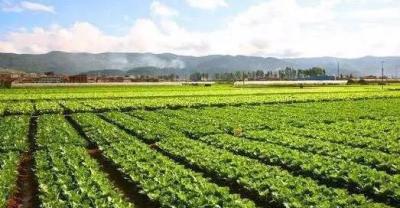Cherry cultivation techniques and management: cherry cultivation techniques, the best time for cherry cultivation
As the saying goes, cherries are delicious and trees are hard to plant. The difficulty of planting trees is mainly determined by the characteristics of cherry roots. The root system of cherry is very shallow, so it is afraid of drought; the root system has a higher respiratory intensity, has more oxygen than other fruit trees, and is most afraid of waterlogging. If the accumulation of water in the rainy season lasts a little longer, it will affect root respiration, with light yellow leaves and heavy ones dying. If you want to plant live and good cherries, you must do a good job in orchard establishment, planting and subsequent water management.

I. Garden site selection
Select the land with high topography, not easy to accumulate water, low groundwater level, neutral or slightly acidic sandy loam with deep soil layer and good air permeability. If the soil quality is poor, soil improvement measures such as deep ploughing and organic fertilizer should be carried out before the construction of the garden, because cherries have high requirements for ecological conditions, deep living soil layer and strong soil fertility. only in this way can the cherry root system be developed, the tree potential be strong, the stress resistance be strong, and the fruit quality and yield are high. Especially the soil in the rhizosphere is difficult to improve after planting and establishing the garden.

II. Irrigation and drainage design
There must be good irrigation and drainage facilities around the garden to ensure timely watering during drought and timely drainage and waterlogging prevention in the rainy season. For the new garden, the main ditch and branch ditch should be designed scientifically, and the plain or large plot of land had better be ridged and planted in order to make use of ridge and furrow irrigation and drainage. The infiltration to the root on the side of ridge and furrow irrigation can also avoid the consolidation of root soil after watering, which is beneficial to slow down the rooting of seedlings.

III. Scientific planting
1. Planting time
Cherry planting is best planted in autumn, because of spring drought in the north, the traditional spring planting increases the difficulty of water management. Moreover, if the spring planting is too early and the temperature is unstable, it is vulnerable to freezing damage; if it is planted too late in spring, it will sprout quickly and take root slowly, which will cause dead seedlings. Planted in autumn, it can slow down seedlings and sprout in the current season, and sprout early in the following spring, which is easy to form strong seedlings. After autumn planting, the soil should be buried to prevent frost before freezing.

2. Planting method
The "small pit deep planting and shallow burying method" should be adopted. The traditional cultivation method of fruit trees dug a big hole is not suitable for cherries, because the cherry roots are shallow and not resistant to waterlogging, such as the cultivation of large pits, the soil in the pit is more pine than that around the pit, and it is easy to cause waterlogging in the rainy season, and dead seedlings will appear in serious cases. The "small pit deep planting and shallow burying method" means to dig out three or four shovels of soil, apply two shovels of soil fertilizer, mix the soil at the edge of the pit with the soil fertilizer in the pit, and then place the seedlings (select sturdy seedlings with well-developed roots), and cover a layer of shallow soil only to bury the original soil marks at the roots. Then the soil will be slightly compacted, so that the root neck is about 15 cm below the ground, forming a small tree nest under the seedling. In this way, "deep planting" reduces the center of gravity of seedlings and helps to resist lodging, while "shallow burying" is beneficial to root respiration, which makes seedlings slow, fast and grow well.

3. Water management
After planting, it should be watered frequently, but avoid flooding. Should be combined with the weather, drought is often watered, waterlogging is active drainage, to keep the rhizosphere soil surface dry and wet.
Cherry cultivation techniques Seven measures for planting and Management of Cherry
Cherry cultivation technique Sweet Cherry Super Spindle shaping technique
Annual growth cycle and characteristics of Cherry cultivation techniques
Cherry cultivation techniques Scientific fertilization
Morphological characteristics of cherry cultivation techniques (root, bud)
Cherry cultivation techniques Cherry Variety Daquan (middle) with video summary
Cherry cultivation techniques pull branches, carve buds, heart-picking video
Cherry cultivation techniques soil, Fertilizer and Water Management (part I)
- Prev

Do balcony vegetables need to be fertilized? Water and fertilizer management skills of balcony vegetables
The price of chives and coriander is rising day by day this year, and there are places where chives and cilantro are ridiculously expensive, so in order to save money or decorate, you might as well grow some vegetables on the balcony while raising flowers. The vegetables grown by yourself taste different.
- Next

Osmanthus planting technology
1. Osmanthus fragrans (tea) efficacy and role of spicy osmanthus fragrans, can be used as medicine. Have expectorant, cough, salivation, toothache and other effects. Sweet osmanthus flavor, lasting, can be made cake...
Related
- Fuxing push coffee new agricultural production and marketing class: lack of small-scale processing plants
- Jujube rice field leisure farm deep ploughing Yilan for five years to create a space for organic food and play
- Nongyu Farm-A trial of organic papaya for brave women with advanced technology
- Four points for attention in the prevention and control of diseases and insect pests of edible fungi
- How to add nutrient solution to Edible Fungi
- Is there any good way to control edible fungus mites?
- Open Inoculation Technology of Edible Fungi
- Is there any clever way to use fertilizer for edible fungus in winter?
- What agents are used to kill the pathogens of edible fungi in the mushroom shed?
- Rapid drying of Edible Fungi

